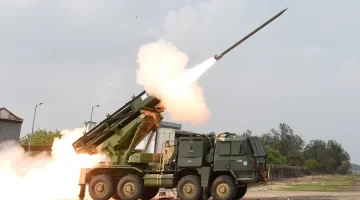- Views: 3K
- Replies: 24

In a significant move to strengthen its nuclear deterrence capabilities, India quietly launched its fourth nuclear-powered ballistic missile submarine (SSBN) this week at the Ship Building Center in Visakhapatnam. This launch comes amidst heightened geopolitical tensions and underscores India's commitment to maintaining a credible second-strike capability.
The new submarine, codenamed S4*, boasts 75% indigenous content, a testament to India's growing prowess in naval technology. It is equipped with K-4 nuclear ballistic missiles, which have a range of 3,500 km and are capable of being fired from vertical launching systems. This enhanced range significantly expands India's nuclear strike capabilities compared to the 750 km range of the K-15 missiles carried by the first SSBN, INS Arihant.
This launch follows a series of strategic moves by the Indian Navy. Just last month, Defence Minister Rajnath Singh commissioned the second SSBN, INS Arighat, and the third, INS Aridhaman, is slated for commissioning next year. Furthermore, the Cabinet Committee on Security recently approved the construction of two more nuclear-powered attack submarines, highlighting the government's focus on enhancing underwater capabilities.
The launch of S4* occurred just a day after Defence Minister Singh inaugurated a Very Low Frequency Naval Station in Vikarabad, Telangana. This station is crucial for communication with India's strategic assets, including SSBNs, which often operate in deep-sea patrols for extended periods.
Experts believe that India's emphasis on SSBNs stems from the increasing vulnerability of aircraft carriers to long-range missiles, such as those possessed by China. SSBNs, with their virtually unlimited range and endurance, provide a reliable and survivable platform for nuclear deterrence.
The launch of S4* marks a significant step in India's pursuit of a credible nuclear triad. With INS Arihant and INS Arighat already conducting deep-sea patrols, and a Russian Akula-class nuclear-powered attack submarine expected to join the fleet on lease by 2028, India is steadily enhancing its underwater capabilities.
This is further complemented by the ongoing construction of advanced diesel-electric submarines like the Kalvari-class INS Vagsheer, and plans for three more in collaboration with the French Naval Group.
As India navigates a complex geopolitical landscape, the development and deployment of these advanced submarines are crucial for maintaining strategic autonomy and safeguarding its interests in the Indo-Pacific region.



